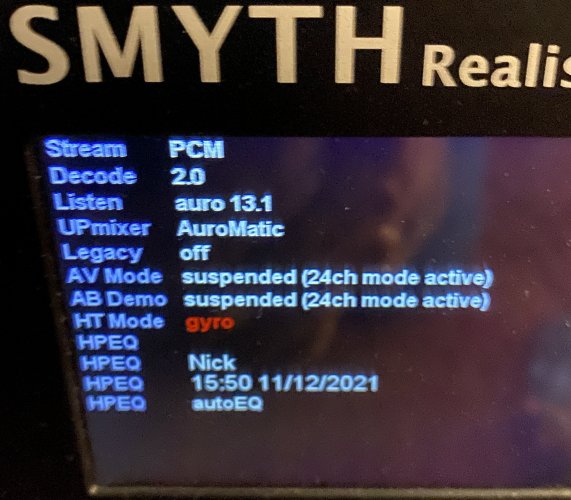2. Send the output of the Realiser to (a device containing) an analog to digital converter with an optical spdif output. If your car system happens to have an optical input use that, otherwise use a portable or car battery powered device containing a optical spdif input and a DAC and analog output and connect that to the car aux input. Now it probably only depends on this last device whether there will be a buzz or not, and I suspect in most cases there won't. (The Realiser is now completely galvanically isolated from the car, if using power from somewhere else to power both the Realiser and the analog to digital converter.)
I actually do already have a small analog-to-digital converter (48KHz), which is powered by a 120V->5V AC/DC power adapter. It accepts RCA and puts out optical/coax. Corresponding small digital-to-analog converters (even with digital volume control) accepting optical/coax and putting out RCA are also available and inexpensive. Once again uses 120V->5V AC/DC power adapter. And then the L/R RCA output of the DAC could go to the 3.5mm input of the car.
Yes, this would galvanically isolate the Realiser from the car, which optimistically seems like it should eliminate the mysterious source of the buzz, which certainly seems like something electrical coming from the direct connection of RCA from the Realiser to the car. I point out that yesterday's buzz could be made louder or softer using the volume control of the car, as well as the volume control of the A8. So breaking the electrical connection via A-to-D and D-to-A does seem like a promising idea. Same concept as using in-line RF transformers to break a ground loop hum on a powered amp-driven coaxial cable connection for TV.
I wonder, though, about the new time delays imputed into the Realiser-to-microphones system as a result of the additional two conversion steps along the way. Even assuming zero buzz and normal operation of the sweep signals and microphones, wouldn't the the added delays affect the resulting PRIR in simulating the car's speakers? Wouldn't they appear to be much farther away from the perspective of the PRIR-creating algorithm, corresponding to the added time delay before the sound being received by the microphones? Could that be compensated for in some settings tweak?
Nevertheless, it's an idea that might work.
I can't help but believe the buzz when using the A8 directly is somehow tied to an output level issue. There is zero buzz when using my Cowon J3 3.5mm headphone output jack and a straight 3.5mm stereo cable to connect to the AUX input of the car. Only when going from the RCA outputs of the A8 to the 3.5mm AUX input of the car.
Also, I have a 50ft long 3.5mm extension (M-F) cable that I use to go from the RCA L/R "tape record output" of my home audio system preamp to the Realtek HD audio "line input" of my desktop PC's rear panel audio connectors, which I use when "transcribing" old vinyl 33 albums to digital files. My home audio system has a turntable, which feeds phono input to the preamp, which ups the level (to line-level) and feeds the RCA L/R "tape record output" to a 3.5mm male connector, connecting to the female end of the 50ft cable run to my PC where the male end plugs into "line input" of the PC. Then the analog-to-digital converter built into the Realtek audio is used (by CoolEdit, which I use to perform the digital recording of analog line-input to PCM) and the result is obviously 100% buzz-free.
This buzz-free all-analog home audio system application (with an analog volume control on the preamp to set the output level here which really is the recording input level) goes directly from RCA analog to line-level 3.5mm input on the PC, and seems identical in concept to what we tried to do with the A8 yesterday but which produced a buzz for some reason. All the levels here seem compatible, with a buzz-free result.
I wonder if the RCA output of the A8 is simply too high?











